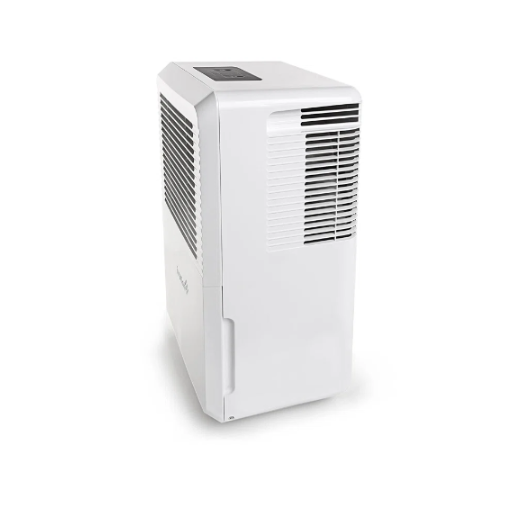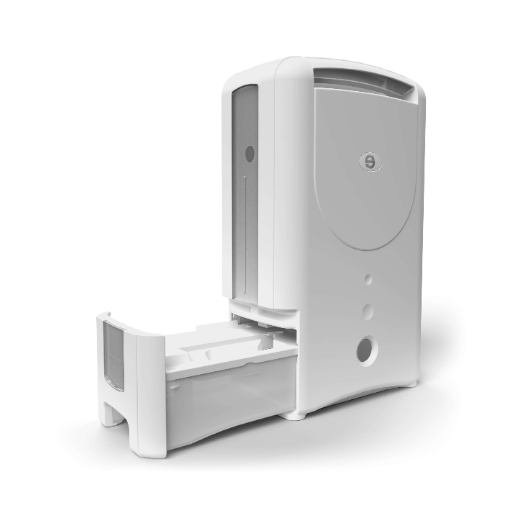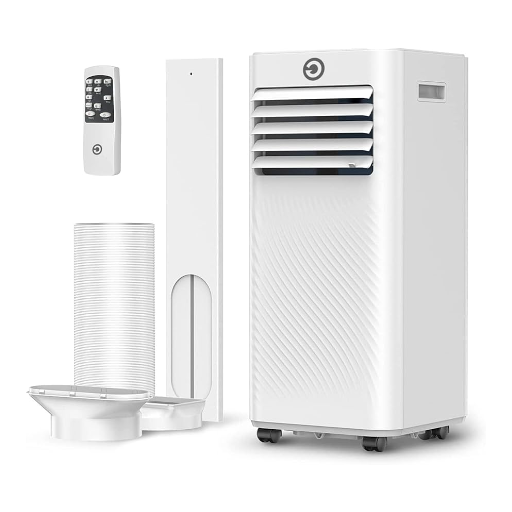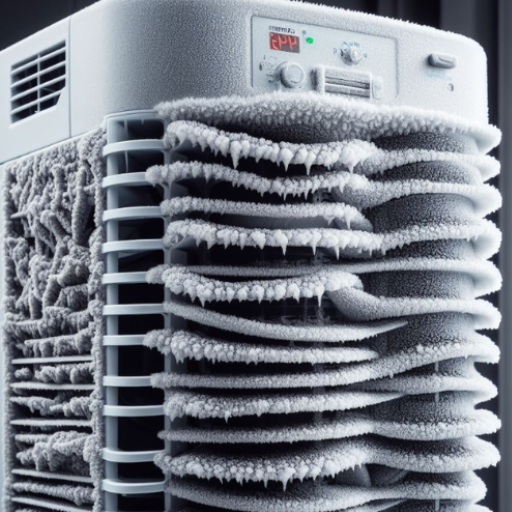A dehumidifier is an essential appliance for maintaining optimal humidity levels in your home, preventing mold, mildew, and other moisture-related issues. However, if you’ve noticed your dehumidifier freezing up, you’re likely dealing with a frustrating and potentially costly problem. Why does this happen, and how can it be resolved? This article will guide you through the most common reasons a dehumidifier might freeze and the steps you can take to troubleshoot and repair it. Whether it’s an issue with room temperature, airflow, or mechanical components, understanding the root cause is the first step toward a solution. By the end of this guide, you’ll be equipped with the knowledge to restore your dehumidifier’s performance and protect your home environment.
Understanding Dehumidifier Freezing
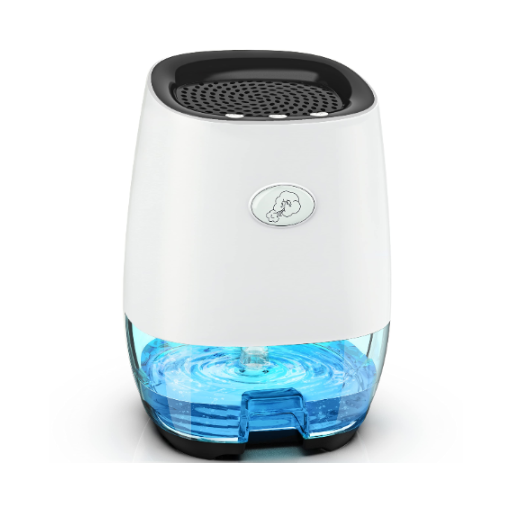
Common Causes of Dehumidifier Icing
One of the prime causes of dehumidifier icing is the low temperature. Most dehumidifiers are designed to work effectively within a certain range of temperature, generally above 65°F (18°C). When the ambient temperature dips below this level, chances are that the coils of the dehumidifier freeze, as cooling by the refrigerant turns the surface from one of condensation to ice. This usually happens in basements, garages, or other unheated environments.
Another common cause could be restricted airflow. The operation of the dehumidifier requires free movement of air across its coils. A blocked air filter or accumulation of dirt and dust can slow down the air movement, which eventually leads to freezing due to uneven cooling. Regular maintenance such as cleaning or replacing filters should avoid such problems.
Mechanical or component failures may cause icing as well; for example, a faulty thermostat and low levels of refrigerant. The thermostat controls the cooling cycle and, if faulty, the coils get colder than they should, resulting in icing. In the same way, low refrigerant disturbs the heat exchange in the condenser and evaporator coils, so freezing is more probable. Repairing such problems may dictate professional intervention or replacement of some parts.
How Temperature and Humidity Affect Coils that are Icing
Temperature and humidity levels in the atmosphere have some bearing on the icing probability of the coils in a refrigeration or air conditioning system. At temperatures lower than the specified working temperature of the equipment, the evaporator coils could be receiving little support in establishing the requisite thermal balance and freezing, as too cold an ambient condition can also cool the coils too much, especially if there is some restriction or very low flow of air across the coils. Therefore, suitable insulation and operation of the system within specified temperature levels help minimize the icing of the coils.
High humidity conditions contribute to icing. The moisture in the air tends to easily condense on the cold surface of the coils. If condensing occurs at a faster rate than the system can drain it away or evaporate it, then the excess water freezes, and an ice build-up starts. This drastically affects the heat transfer capability of the coils and reduces the overall efficiency of the system. Keeping the coils clean and ensuring the drainage system stays unobstructed would reduce this problem in a humid environment.
Temperature and humidity levels must be kept in balance for smooth system functioning. Good icing prevention includes monitoring and regular inspections of environmental conditions. Equipping the system with thermostats and sensors that regulate operation under such variable conditions would help preserve system performance.
The Role of Airflow in Dehumidifier Freezing
Crystal clear airflow is a jittery thing for dehumidifiers, especially in the prevention of freezing. Proper airflow must be ensured for a dehumidifier so that the cooled air may flow uniformly across its coils at temperatures conducive to moisture extraction, and, at the same time, may not allow the formation of ice. Lack of, or uneven flow, could cause the coils to become too cold and hence freezing. This usually happens when filters are blocked, fans are defective, or the entire unit is housed in an inadequately ventilated region.
Keeping the filters clean and changing them regularly, as per manufacturers’ guidelines is crucial to preventing airflow-related freezing. When dirty or clogged, the filter restricts the flow of air so that the drying system tries to compensate for it and reduce coil temperature, reaching freezing levels. Checking for any damage or mechanical failure in the fan will also ensure proper circulation of air within the unit. It is important also to keep the unit inside a large room or open environment with free airflow around the intake and exhaust vents.
Maintenance will prove to be the most important factor in creating good air circulation and preventing ice formation. Regularly checking for any obstacles and accidents, followed by cleaning when appropriate, will substantially reduce the chances of restricted airflow. It will also be good to seek guidance on airflow and positioning from the instruction manual of the dehumidifier. With proper maintenance and adequate ventilation, the end-user would thus be able to enhance the working capacity and the life of the dehumidifier while simultaneously decreasing the chances of freezing-related operational snags.
Identifying Issues with Your Dehumidifier
Inspecting the Fan Motor and Blower Wheel
It is critical to assess whether the fan motor and blower wheel of your dehumidifier are working correctly to correctly identify its malfunction. In producing the flow of air throughout the unit, the fan motor ensures that moisture extraction and heat exchange processes take place properly. First, unplug the unit and remove the access panel; then, visually inspect the fan motor for any damage, such as worn bearings, frayed wiring, or debris blocking the motor.
Next, check for any cracks or dirt that may affect the blower wheel’s alignment. A damaged blower wheel will decrease airflow, resulting in impaired dehumidifier working conditions or even frost building on the coils. Use a soft brush or compressed air to remove any debris restricting the wheels’ performance. Also, ensure the wheel spins freely and isn’t resisted, as this is a sign of motor strain or nonexistent lubrication.
For more accurate troubleshooting, reference the manufacturer’s service manual for the amperage value of the motor, and measure the current draw with a multimeter during operation. Variations in measured versus specified amperage may imply motor fatigue or wiring faults that could require professional rectification or replacement. Keeping the fan motor and blower wheel in prime condition will combine to provide efficient humidity control and amplify the lifespan of your dehumidifier.
Evaluating the Humidity or Temperature Sensor
The performance of the humidity or temperature sensor of a dehumidifier is vital in keeping exact environmental control. To check the sensor functioning, you first need to refer to the technical specifications in the service manual of the dehumidifier. You need to check for the expected resistance or voltage output range from the sensor when subjected to different humidity or temperature conditions. Using a digital multimeter, measure the voltage or resistance at different parameter conditions to confirm that the sensor is indeed reading within the manufacturer’s specified ranges. A gross deviation from the standard value could point to re-calibration needs, degradation of sensor parts, or faulty wiring. It is good practice also to inspect the sensor for any visible signs of damage such as corrosion or dirt accumulation, as these will erode its accuracy.
Response times should also be considered in the testing of the sensor. To test, induce a simulated environmental change, such as an increase in humidity using the controlled humidifier or an alteration of temperature using a heat source. Check how rapidly the sensor picks up the change and if the dehumidifier then alters its operations. Likewise, one should measure stability in terms of how constant the readings from the sensor remain in environmental conditions that stay constant. Any notable delays, erratic readings, or anomalies should signal to the technician a malfunction of the sensor or an electronic interference within the unit’s circuitry.
Additional conclusions about sensor performance can be drawn by using more sophisticated diagnostic instruments. Many newly manufactured dehumidifiers now have microcontroller-based diagnostics so that the user can obtain error logs or run self-check programs right off the control panel of the unit. If such an option is at the user’s disposal, it should be used to verify sensor integrity. In the case of chronic sensor-related problems, it may also be beneficial to access technical bulletins or seek further advice from the manufacturer’s support. Bearing a fully functioning humidity or temperature sensor is a prerequisite in optimizing the efficiency of the dehumidifier, extending system life, and avoiding unnecessary energy wastage via erroneous readings.
Checking for Blocked Air Filters and Vents
Blocked air filters and vents pose common problems greatly affecting the efficiency and functioning of a dehumidifier. These crucial components gather dust, debris, and other airborne particles with time, thereby impeding proper airflow. With this impediment, the system has to work overtime, which results in higher electricity bills, reduced moisture removal capacity, and possible overheating of the system.
Check visually for heavy dirt deposits or discoloring when inspecting the air filter for blockages. Most air filters can be removed and cleaned either with a vacuum cleaner or with water, depending on what the manufacturer recommends. Reinstall the filter into the unit only after completely drying it. Inspect the vents for any obstructions as well. This can be furniture, curtains, or any object that could hinder airflow. Maintain clearance around the unit as instructed by the user manual to optimize performance.
Set up maintenance systems for individualistic checks and clean-ups of filters and vents. This help will also extend the life of the dehumidifier and ensure it works within design capabilities. Leaving this to chance may lead to inefficient working and eventual breakdowns-the much-opposed monetary avenues-to repair or replacement.
Troubleshooting Tips to Fix a Dehumidifier
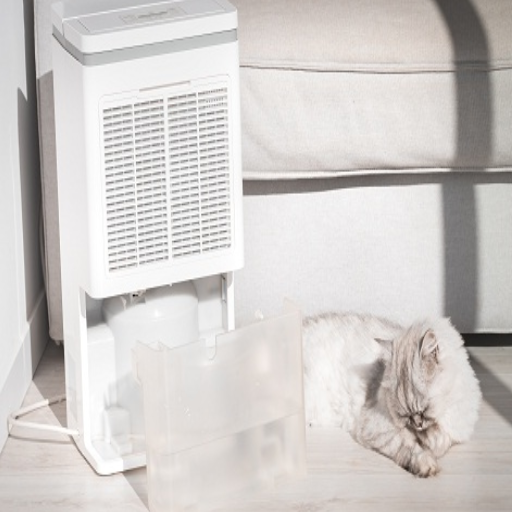
How to Move the Dehumidifier for Optimal Performance
The proper placement of a dehumidifier is urgently necessary to maximize operations and ensure that air moisture is removed. When moving it, first select a central area within the target room, as this allows a more even airflow across the space. Place the unit ideally with a minimum distance of 6 to 12 inches from any wall or furniture so that airflow is not blocked. Keep it away from heat sources, such as radiators or sunlight, for excessive heat will interfere with its temperature regulation processes.
Before moving the unit, ensure it has been fully turned off and unplugged from the power source so as to avoid any dangers of short circuit or electric shock. If your dehumidifier is equipped with a water container, make sure it is emptied so as to reduce spillage during transport. When shifting your unit to a place of very different temperature, give it a few hours to acclimatize before plugging it on, for sudden temperature changes can encourage condensation to form on internal parts and hinder their function.
For extremely damp environments, it pays to place the dehumidifier near the source of humidity, such as the bathroom or laundry room. Also, check that the unit is on level ground so it will not vibrate during operation. Following these rules will ensure the better working of your dehumidifier and increase its life span.
Adjusting Settings to Prevent Dehumidifier Icing
This way, I prevent my dehumidifier from icing by making sure that the temperature under which it operates is within the range provided by the user manual since the lower temperature tends to favor the formation of ice on the coils. In case the dehumidifier is to be used in the cold, I check whether it comes with an autofrost function. Such a feature greatly aids in melting the ice and building up from time to time to maintain efficiency. Otherwise, I may consider slightly increasing the temperature level of the room by using a space heater or by moving the dehumidifier to somewhere warmer.
I also make sure that the humidity levels are set so as not to overly stress the dehumidifier to cause icing unnecessarily. Too low humidity settings run in cold spaces are an icing recipe; therefore, I go for settings to remove moisture efficiently but without overburdening the system. A regular check on the functioning of the unit and adjustments in settings according to changes in the external environment go a long way in icing protection.
Also, I give maintenance priority so as to avert any icing issue. That includes cleaning the air filter regularly, providing free airflow, and eliminating the chance of ice build-up on the coils. I also check for and remove possible obstructions around the air intake and exhaust vents. By putting together these happenings with careful operation and monitoring, my icing prevention measures have proved well worth their while, thus ensuring the best performance of the dehumidifier over the years.
Cleaning Procedures to Avoid Ice Formation
To maintain efficient running of the dehumidifier and avert ice formation, a systematic cleaning program must be implemented. Start by unplugging it from the power source and removing the air filter. This filter needs regular cleaning, at least once a month, with mild soap and warm water or vacuumed to clear accumulated debris. Once washed, the filter must be completely dried before being reinstalled in the unit.
Proceeding onward, check for any dust or dirt on the coils as this will repel heat exchange and contribute to ice formation. Use either a soft lint-free cloth or a special coil cleaner to wipe any contaminants from the coil surface. At this stage, check the water collection container for possible microbial growth or scaling as well; disinfect the reservoir as needed by using a mild bleach solution to keep all bacteria or mold that would otherwise ultimately clog the system at bay.
During cleaning, it becomes practical to verify any blockages in the intake and exhaust vents because restricted airflow worsens cooling inefficiencies that cause ice to be a problem. Remove such obstructions carefully and ensure unobstructed spacing around the units to facilitate the continuous flow of air. Should the cleaning regime be followed scrupulously, ice build-up should be the exception rather than the rule, with greater efficiencies and longer life spans for dehumidifiers as immediate benefits.
Repair Parts and Maintenance for Dehumidifiers
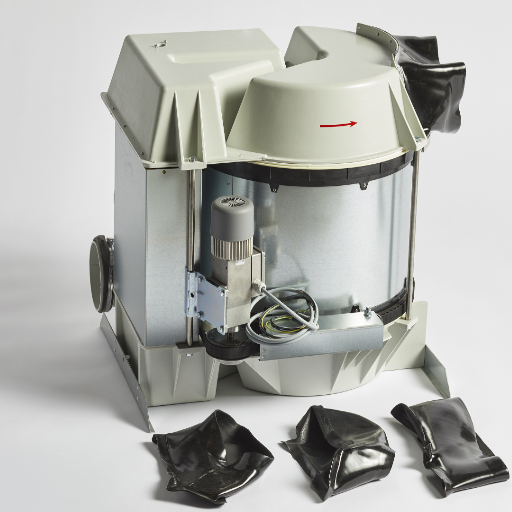
Identifying Necessary Repair Parts
To operate efficiently, the first thing to do is to identify components that are more susceptible to wear and tear in a dehumidifier. Some components that usually need replacement are the compressor, fan motor, humidistat, reservoir, drainage system, and air filters. The compressor is regarded as the heart of any dehumidifier, and any failure in it can cause cessation of the entire operation. Periodic inspection for any unusual noise or diminished noise of the cooling system can help in the early diagnosis of compressor problems. The same goes for a fan motor; it may be inspected when the airflow is deemed insufficient or inconsistent.
The humidistat, which maintains the set humidity level, is also critical to be checked during maintenance. Some classic symptoms of a bad humidistat include not remaining at the correct level or bad readings. Usually, these can be rectified by calibration or replacement. Filters catch dust and particulates that could infiltrate the machine’s internal workings. These require cleaning or replacement regularly so that debris does not accumulate and hinder performance, thus leading to higher energy costs. Leaving these components unattended can degrade performance and accordingly lead to the long-term damage of the dehumidifier.
When ordering replacement parts, always remember to indicate the model number and check against the manufacturer’s specifications to ensure compatibility. It is wise to use OEM (Original Equipment Manufacturer) parts, which are precisely designed according to your unit’s specifications and meet the original manufacturer’s criteria for performance and safety. Generic or inferior parts may look like a bargain today, but tomorrow they could jeopardize the endurance and functionality of the unit. For genuine parts, authorized dealers or the manufacturer’s website are the most trustworthy channels. By maintaining consistent maintenance schedules and promptly replacing worn parts, maximum operational efficiency, and maximum service life for the dehumidifier can be ensured.
Regular Maintenance Routines to Prevent Frost
Frost buildup must be prevented in a dehumidifier to ensure proper functioning and avoid long-term damage. Usually, frost formation happens when the unit is working in environments whose temperature is below the recommended temperature range. To prevent this, some of the following items should be included in regular maintenance routines:
- Monitor Ambient Temperature: Make sure the dehumidifier is used in places where the ambient temperature is above 41°F(5°C) because most of the regular types are made to do well within this range. For such cold areas, go for a type that has an automatic defrosting feature.
- Clean the Coils: The dirt and debris accumulated on the evaporator and condenser coils hamper heat exchange, hence the formation of frost. Use a soft brush or a vacuum with a crevice tool to clean debris once a month. Deep cleaning with a coil cleaner as instructed by the manufacturer might be required on occasion.
- Examine and Change the Air Filter: A blocked air filter reduces airflow, thereby aiding an increase in frost formation. Examine the air filter at least every two weeks and clean or replace it as directed by the manufacturer. High-use recommendations suggest a change once in three months.
- Good Ventilation: The dehumidifier has to be located within an area that provides good air circulation. Maintain a minimum clearance of 12 inches to prevent restricted airflow, which results in uneven cooling and thus the formation of frost.
- Regular Draining of Water: If the water tank becomes full, the unit may cease to work efficiently, leading to more incidents of frost buildup. Empty the tank every day in highly humid situations or ensure the continuous drain function is properly set up.
- Inspect the Humidistat for Proper Settings: Improper humidistat settings result in compressor overworking in low humidity, thereby raising frost incidents. Correctly calibrate the humidistat to your desired indoor humidity, which is normally 30–50%.
When these measures are carried out with the intermittent assessment of the operational condition of the unit, there will be a successful prevention of frost buildup and resultant extension of the lifespan of the dehumidifier.
When to Call a Professional for Repairs
Although very often routine maintenance can solve minor problems, some types of problems have to be dealt with by a professional to ensure the safe and efficient operation of the newly installed device. Such instances include:
- Persistent Frost Build-Up: Frost buildup limited to masked basic troubleshooting, such as cleaning coils and ensuring airflow, could all be symptoms of bigger problems with the malfunctioning thermostat and faulty defrost control system. One would need an expert technician to work on diagnosing and repairing such internal mechanisms.
- Unusual Noises or Vibrations: Excessive noises or vibrations would indicate mechanical failures, such as a failing fan motor, loose parts, or perhaps a damaged compressor. Having performed this check immediately would save the unit from further damage and ensure that repairs are accordingly done.
- Cooling Coil and Refrigerant Problems: Lack of performance in dehumidification accompanied by the air being too warm or even visible leaks around the cooling coil might be a refrigerant leak or compressor issue. Handling of refrigerants requires certified training given the environmental safety laws, thus making it a must to call the professionals.
- Frequent Shutoffs or Electrical Issues: When the unit shuts off several times, trips the circuit breaker, or displays some error codes, it may be caused by the control board, wiring, or power supply. An electrical diagnosis and repair have to be conducted by a competent technician to save the risk.
- Failure to Restart after Routine Maintenance: If a dehumidifier fails to resume normal operation shortly after routine cleaning and maintenance, then it is most probable that there is a fault in the advanced system or in the sensors that requires special tools and expertise to rectify.
By dealing with these problems on time with the aid of an expert, one essentially not only gets the dehumidifier back into working condition but will has it functioning to its safety standards. Spending time working with professional technicians ensures an accurate diagnosis and thereby cuts downtime and repair costs.
Preventing Dehumidifier Freezing in the Future
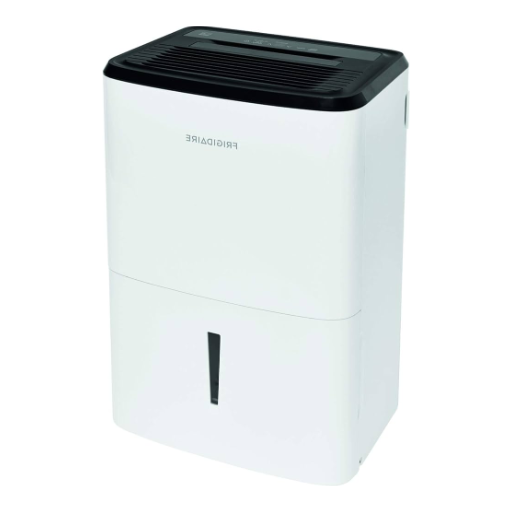
Choosing the Right Dehumidifier for Your Climate
Dehumidifiers come in many types and variations. The type suitable for one weather zone is different from the model suitable for another due to variations in design, capacity, and operation. For those in a very humid climate zone, such as the coast or tropic, a high-capacity dehumidifier rated to remove about 50-70 pints of moisture per day is best suited to remove that excess moisture from the air most efficiently. For more mild or moderately humid climates, smaller capacity units rated for about 20-30 pints a day may prove to be more adequate, as they are not highly optimized for heavy dehumidification work.
When choosing your dehumidifier, temperature range has to be involved as well. Supposing one lives in a cold climate or is interested in a basement or garage that tends to be very cool at times of the year, then it would be wise to consider the use of dehumidifiers built to operate at low temperatures, which means that the unit has an automatic defrost ability to stop the coils from freezing and losing their ability to dehumidify.
Energy consumption should be considered in the first place. It is advisable to seek those that come with an Energy Star certification since they consume less power to meet the required standards. By ensuring that your choice criteria coincide with your environmental condition and space requirement, you can be sure that your dehumidifier will function, remove excess moisture reliably, and avoid further maintenance problems that might arise from mismatches.
Best Practices for Maintaining Room Temperature and Humidity
Maintaining an ideal indoor environment temperature-and-humidity-wise requires proper environmental manipulation and choice of amenities. Normally, indoor relative humidity is maintained between 30 and 50 % while temperatures are kept in the range of comfort, such as 68 to 72 degrees F, for living areas. Achieving these parameters is possible by using programmable thermostats and hygrometers. Programmable thermostats allow temperature adjustments and schedules to be set so that energy consumption is minimized during periods of non-occupancy. Hygrometers, on the other hand, provide instant humidity readings so adjustments may be made proactively.
To avoid the onset of humidity-related problems like mold or respiratory irritants, advanced HVAC systems with humidity control features can be used for automatic regulation. Moreover, sealing cracks and gaps around windows or walls will help minimize infiltration of external air, which would throw the internal ambiance off balance. Also, keeping up with regular checks of the HVAC filter and ventilation system maintains balanced air circulation with optimum efficiency of the system.
The incorporation of new-age technologies, namely smart climate control devices, can be an added advantage in regulating the climate. These employ sensors and AI-based analysis to adjust internal conditions optimally and react dynamically to any environmental changes. Combining this with some energy-saving methods, such as the use of ceiling fans or the use of natural air during milder weather, will guarantee that the indoor environment remains sustainable and healthy for either residential or commercial purposes.
Long-Term Solutions for Avoiding Icing Issues
Icing presents different challenges in the long term and necessitates the backing of advanced technologies, innovations in materials science, and active system concepts. One possible solution is to employ thermal coatings or hydrophobic treatments on structures and equipment prone to icing. Materials that offer themselves to such coatings present less adhesion for the ice and can lower the mechanical de-icing effort considerably.
In other words, serves as an additional mechanism for supplying real-time data on changes in temperature and icing conditions, thus allowing the mitigation system, be it heating or automated sprays, to activate preemptively. Grid-independent heating may also be implicated as a sustainable source of power solar, geothermal, or similar-for supporting certain critical infrastructures, such as wind turbines or aircraft components, in remote locations.
Data from predictive weather models, when used in conjunction with AI analytics, can strengthen these efforts by pinpointing the high-risk icing windows so that decisions can be made regarding the optimal deployment of resources, ensuring that the equipment stays up and running under adverse weather conditions. If supported by comprehensive data-informed strategies, industries can reliably and sustainably minimize the risks and costs imposed by ice accumulation.
References
-
Improving the energy efficiency of dehumidification technology
James Madison University – Commons Library
This thesis examines energy use and management in dehumidification systems. -
Heat pipe dehumidification for supermarket energy savings
MIT – DSpace
A study on using heat pipes in air conditioning units to enhance dehumidification. -
Icing Mitigation via High-pressure Membrane Dehumidification
OhioLINK – ETD Center
Research on mitigating icing in dehumidifiers under specific conditions. -
Systems for controlling relative humidity and temperature
Mississippi State University – Scholars Junction
Discusses the challenges of using dehumidifiers in controlled environments. -
Coil Condensation Detection For Humidity Control
Texas A&M University – OakTrust
Focuses on controlling humidity and temperature in building environments.
Frequently Asked Questions (FAQ)
Q: Why is my dehumidifier freezing up?
A: One of the most common reasons why my dehumidifier freezes up is due to the temperature of the evaporator coil dropping too low. This can happen if the surrounding temperature is below 65 degrees Fahrenheit or if the humidity is very low, causing the coils to freeze.
Q: What factors can cause a dehumidifier to freeze?
A: Several factors can cause a dehumidifier to freeze, including low ambient temperatures, a dirty dehumidifier filter, malfunctioning fan blades, or issues with the humidity sensor. If the filter is clean but the dehumidifier is still freezing, it may be an issue with the humidity control.
Q: How can I prevent my dehumidifier from icing?
A: To prevent your dehumidifier from icing, ensure that it is placed in an area where the temperature is above 65 degrees Fahrenheit, regularly clean the filter, and inspect the coils for any ice buildup. Additionally, monitor the relative humidity to keep it within the optimal range.
Q: What should I do if ice is forming around the coils?
A: If you notice ice forming around the coils, first turn off the dehumidifier and let it thaw. After it has thawed, inspect the coils and ensure the fan is running properly. If the problem persists, check the dehumidifier fan motor and the blower wheel or fan blade for any faults.
Q: Is it normal for dehumidifier coils to freeze?
A: While it is not normal for dehumidifier coils to freeze, it can occur under certain conditions such as low temperatures or high humidity. If your dehumidifier is operating in an environment where the temperature frequently drops, it may be more prone to freezing.
Q: How do I know if my dehumidifier fan is working properly?
A: If your dehumidifier is freezing up, it could be due to a faulty fan. Check if the dehumidifier fan is running when it is turned on. If not, the dehumidifier fan motor may need to be replaced to ensure proper airflow around the coils.
Q: What temperature should I keep my dehumidifier operating?
A: It is recommended to keep your dehumidifier operating in temperatures above 65 degrees Fahrenheit. Operating the unit in lower temperatures can cause the coils to freeze and lead to inefficient dehumidification.
Q: Can I restart the dehumidifier to fix this problem?
A: Restarting the dehumidifier can help temporarily resolve the issue of freezing. However, it is crucial to address the underlying cause, such as inspecting the coils and ensuring the fan is functioning correctly, to prevent the problem from recurring.

